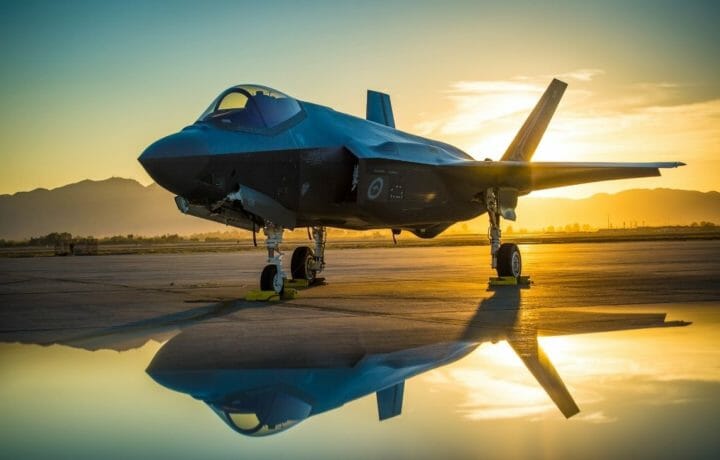Supporters of the F-35 Joint Strike Fighter program have continued to praise the capabilities of the fifth-generation stealth aircraft. The aircraft has been adopted by the United States military, as well as more than a dozen key allies and partners around the world – with Germany just announcing earlier this month that it would acquire upwards of 35 of the aircraft.
Yet, this week, the program hit some turbulence as the U.S. Department of Defense announced on Wednesday that it would seek to buy fewer of F-35 Lightning IIs in 2023. According to reports, the U.S. Air Force has chopped its order of the aircraft by a third, while the United States Marine Corps will buy approximately 25% fewer aircraft. The U.S. could even slash its order of the F-35C – the carrier-based variant of the Joint Strike Fighter. In total, 33 aircraft have been cut from the expected procurement of 94 aircraft for next year.
To date, the U.S. military has ordered approximately 2,400 F-35 Lightning IIs, while another 900 had been ordered from 15 foreign clients. Lockheed Martin has delivered around 750 of those as of the end of last year.
F-35 Production Levels
The United States military had been on track to receive between 60 and 85 of the Lightning IIs each year, yet it is likely that the foreign government contracts would take up any slack from the Pentagon’s cuts. As a result, F-35 production rates are expected to remain around the same. Lockheed Martin delivered a total of 142 F-35 fighter jets last year, three more than it had planned.
“It is premature to speculate about the proposed defense budget prior to its release,” a Lockheed spokesman said via a statement about the budget. “The F-35 is the most lethal, survivable and connected fighter in the world today, and is strengthening our allies, deterring our enemies, and bolstering our economy.”
In addition, Lockheed Martin had told investors to expect about $66 billion in sales of the aircraft in 2022, driven by the adoption of the aircraft by Germany – while Switzerland and Finland also recently announced plans to adopt the jet.
Since Russia launched its unprovoked attack on Ukraine last month, several European nations – including Germany – have announced plans to increase defense spending, and as a result defense stocks have seen a demand as those nations likely will be investing more seriously in military hardware.
F-35 in the Crosshairs
The decision by the Pentagon to scale back on the F-35 comes following the January release of the Fiscal Year 2021 Annual Report, which suggested the program was in a “state of suspended development” and that “little progress” had been made last year.
Other factors that led to the scaling back of the Pentagon’s acquisition of the F-35 included the high operating and maintenance cost.
As the F-35 order is being reduced, it was also reported that the U.S. Air Force would instead request 24 F-15EX jets built by Boeing, up from the 14 planned in the Fiscal Year 2021 (FY21) budget. The F-15EX is an updated version of the F-15E Strike Eagle that was first introduced in the 1980s, and will replace the service’s aging aircraft.
Critics of the F-35 contend that it is simply too expensive, but supporters have argued that the DoD is making a mistake by going essentially backwards while near peer adversaries are forging ahead with more capable aircraft.
“The cutting back of F-35 fighter production is a massive mistake,” Harry J. Kazianis, senior director of the Center for the National Interest, told ClearanceJobs. “This move will only increase the overall cost and make the U.S. military dependent on older, fourth generation jets that would be destroyed by advanced air defenses already in use by China or Russia.”




